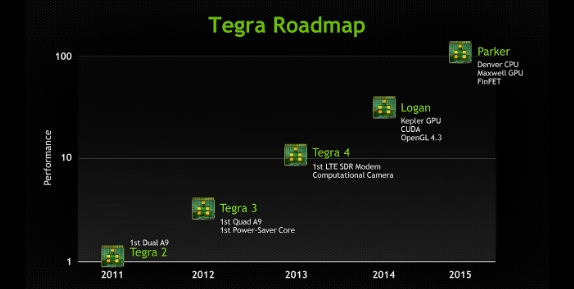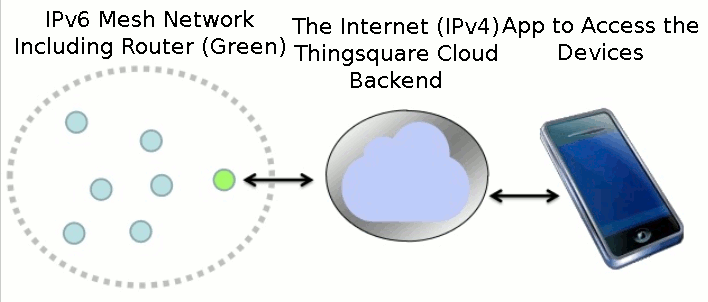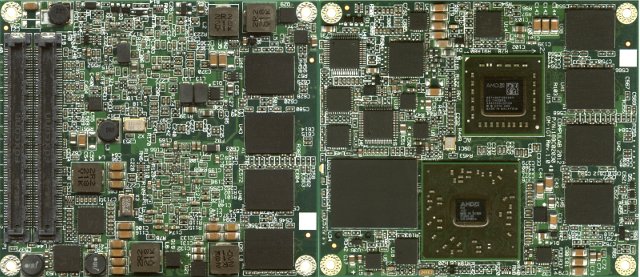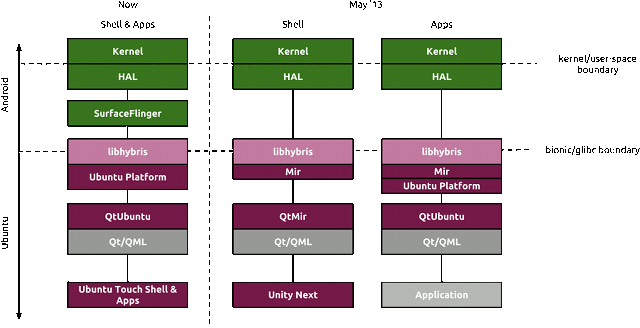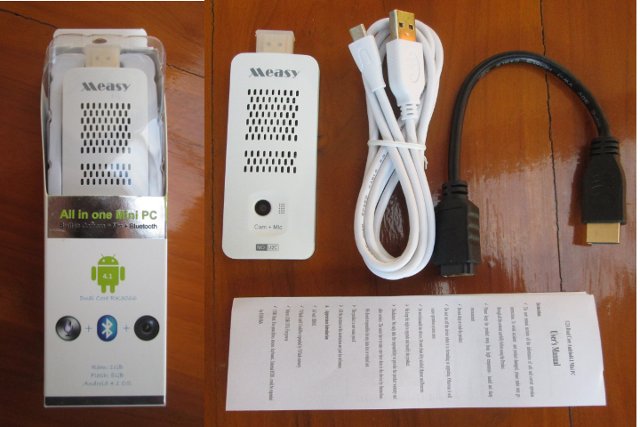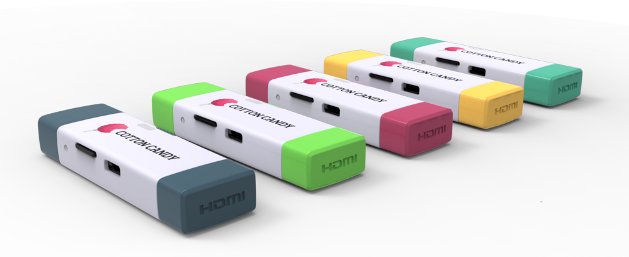Nvidia has given an update about the roadmap for its Tegra processor at the GPU Technology Conference in San Jose, California. Tegra 4 will still be followed by Logan (Tegra 5) as planned with a Kepler GPU and support for CUDA and OpenGL 4.3, but “Stark” has been replaced by “Parker” (Tegra 6) which will be the first 64-Bit Tegra processor based on Denver CPU, Maxwell GPU and make use of Finfet transistors. Logan will be available in 2014, and Parker should be available in 2015 with 100 times more performance than Tegra 2. With this kind of performance, the separation line between desktop and mobile processors will be gone. Nvidia also unveiled Kayla (“Logan’s girlfriend”), a development platform for CUDA and OpenGL based on Tegra 3 quad-core ARM processor and a Kepler GPU connected via a PCI express slot. Jen-Hsun Huang (above) showcased Kayla performance by running real-time ray […]
Thingsquare Mist – Open Source Firmware for The Internet of Things
Thingsquare recently released the source code for the Thingsquare Mist firmware, an ultra lightweight router software (<4 kB memory) for the Internet of Things based on open Internet standards such as IPv6, RPL (Routing Protocol for Lossy networks), and 6lowpan. Thingsquare Mist allows to connect battery-powered wireless micro-controllers to the Internet, and is currently used in applications such as smart light bulbs, connected home appliances, and connected cities. The IPv6 mesh network is composted of nodes with a low power radio that communicate with the Mist router (Green), which in turn connect to the Internet and Thingsquare Cloud backend (Thingsquare Haven) to store the data, and/or receive control commands via Ethernet or Wi-Fi. The end users can then use an App to monitor, and/or control the devices remotely. Thingsquare Mist uses IETF RPL IPv6 mesh routing protocol (pronounced “ripple”) for IPv6 nodes communications. Thingsquare Mist runs on several low-power wireless […]
ARMBRIX Zero / OPENBRIX Zero Board Cancelled
ARMBRIX Zero (renamed to OPENBRIX Zero), the cheapest ARM Cortex A15 board that was supposed to hit the market next month, won’t be produced anymore. Howchip has published a laconic notice to explain the cancellation: Dear Customers Due to a situation experienced by the ARMBRIX Company(www.armbrix.com), the production of its boards have been discontinued. At this time we ask for the understanding of our customers who have shared interest in the ARMBRIX zero/OPENBRIX zero product. Every PAYPAL payment will be refunded by next week. Refunds will take 3-5 business days to process. We apologize for this inconvenience, and would like to thank every customer that has appreciated the ARMBRIX/OPENBRIX zero product. The project owner cannot provide an explanation why this has been canceled (it’s probably confidential), but still offer people to contact him if they have project ideas for the board. That means the only Cortex A15 option is now […]
$89 Compulab CM-iGT CoMs Feature AMD G-Series APUs
Compulab, an Israeli company specialized in embedded computing, has recently introduced computers-on-module based on AMD G-Series APUs that will sell for as low as $89 per unit (for 1k orders) depending on selected features and options. The module is available in commercial, extended and industrial grades, and supports up to 4GB RAM, and 32 GB Flash. Here are the specifications of these modules: CPU – AMD G-Series Processor: G-T16R single-core @ 600MHz, G-T40E dual-core @ 1GHz or G-T56N dual-core @ 1.65GHz GPU – Integrated GPU Radeon HD 6250 supporting the following standards: DirectX 11, OpenGL 4.0, OpenCL Video Processing Unit – UVD 3 engine with native H.264, VC-1, MPEG2, and DivX, 1080p Blu-Ray playback support System Memory – 2GB – 4GB DDR3-1066, 64-bit Storage: On-board BIOS flash, 1MB, reprogrammable On-board SSD, up to 32GB, MLC, through SATA interface Interfaces: Display – Up to two DisplayPort interfaces, up to two HDMI […]
Future Versions of Ubuntu To Feature Mir Display Server Compatible With Android Graphics Drivers
The X server is getting old, and many developers complain it’s not an optimal solution anymore due to its (over) complexity, which was why Wayland was developed. However, it turns out Ubuntu will not use Wayland, but instead their own display server called Mir which will be used in all form factors from phones to desktops. Phoronix has provided a quick summary about the key aspects of Mir: Mir is a new display server being developed at Canonical and it is not based on X.Org or Wayland. Android graphics drivers will be supported. Existing DRM/KMS/Mesa/GBM (the open-source Linux graphics drivers) will work. Canonical is pressuring the binary blob vendors to make their drivers compatible. There will be support for legacy X11 applications through an integrated root-less X.Org Server. Canonical will natively support GTK3 and Qt/QML toolkits with Mir. Mir will be used for all form factors from Ubuntu Phones to […]
Measy U2C Gets Finless ROM and PicUntu Support
A few weeks ago, I reviewed Measy U2C, a Rockchip RK3066 mini PC with a webcam using the stock Android firmware. Since then other people received the device, and started to work on improving it notably by releasing a Finless ROM and providing instructions to install PicUbuntu on the device. Bob Finless is Freaktab.com administrator., and he has released popular custom ROM for the most commonly RK3066 mini PCs, and this time it’s Measy U2C turn! Measy U2C Finless ROM This first custom ROM is based on the latest ROM released on Geekbuying (March 1st, 2013) that fixes the CPU frequency, and let the device now achieve 9200 Antutu score. The Finless ROM brings the following improvements: Fully rooted with the latest SU and SUperUser.apk. All Google apps updated to latest, except Google Search. Deleted unusable and junk apps. Cleaned up the file system with tune2fs. Increased “system” space for […]
FXI Technologies Cotton Candy HDMI Stick To Fully Support Both Android and Ubuntu
FXI Technologies was the first company to ever show an HDMI TV dongle when they unveiled the Cotton Candy in November 2011. Since then, many Chinese companies started to provide similar products at lower cost, and the company further improved the Cotton Candy, which is still powered by Exynos 4210 (dual core Cortex A9), by making it even smaller, and getting rid of the internal flash in the process. As a memory refresher, here are the specifications of the Cotton Candy: SoC – Samsung Exynos 4210 dual core Cortex A9 + Mali-400MP4 System Memory – 1GB DRAM Storage – No flash, up to 64GB microSD Video Output – HDMI Connectibity Wifi 802.11b/g/n Bluetooth 2.1 + EDR USB – USB 2.0 male connector for power and connection to devices that supports USB mass storage + microUSB Video Codecs- 480p/720p/1080p Decode of MPEG4-SP/H.263/H.264 AVC/MPEG-2/VC1 Audio Codecs – MP3, AAC, AAC+, Real Audio […]
Ubuntu 11.10 on GK802/Hi802 mini PC with 2D/3D and Video Hardware Acceleration
You may remember an Ubuntu 11.10 image was released via Geekbuying early January, but this image would not boot on my Hi802, lacked 2D/3D acceleration, and to my knowledge there hasn’t been any update since then. So hope of proper Linux support on the device was fading, until the community discovered Freescale released patches for i.mx6 HDMI dongles, developers setup the imx6-dongle community, and after a lot of work, mainly by three members: Jasbir, Dmitriy (rz2k) and James, there’s now GPU and VPU support on Ubuntu 11.10. Here’s a summary of the current status: Wifi working. External SD working Matched IOMUX configuration to align with the Android image. Stripped out unnecessary device initialisation from the original HDMI dongle source. Enabled EGL and GLES HW Acceleration in Ubuntu. Unity desktop might be partially HW accelerated (TBC) Jasbir uploaded a video to YouTube to show the progress, and it looks pretty good. […]


